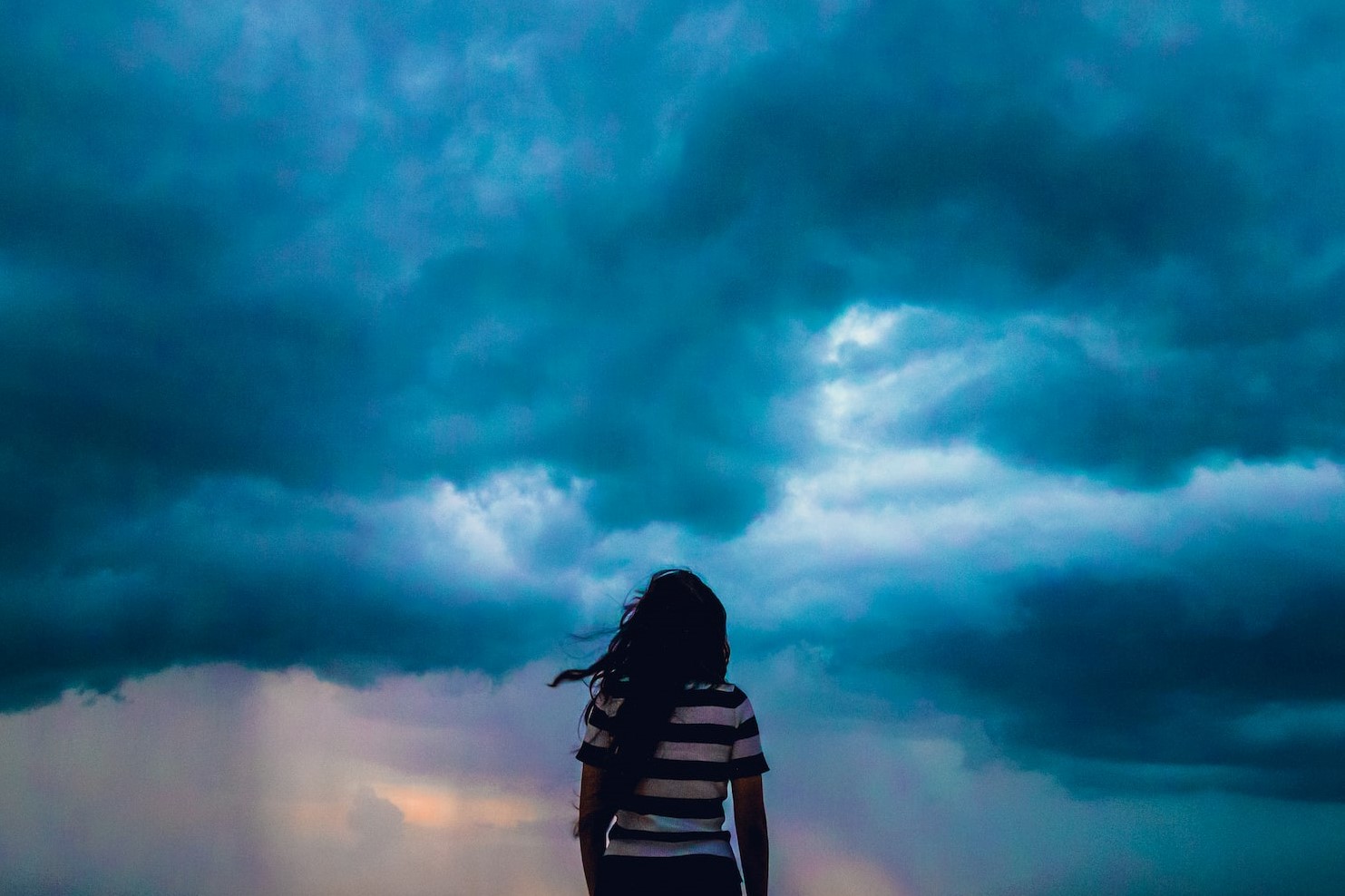Hurricanes, Hijabs & Yom Kippur


Photo by Shashank Sahay on Unsplash
Those of us living in Miami for a while could tell that the rain falling on Tuesday and Wednesday was no ordinary rain.
We felt the barometric pressure in our bodies. We saw the gusts of wind, which we knew were “bands” on the outer edge of Hurricane Ian. We realized the birds we usually hear weren’t chirping and instead were hiding.
As I watched that great big white swirl on the Weather Channel, I felt relieved and grateful it wasn’t hitting Miami and prayed for the safety of our fellow citizens on the west coast of Florida.
Who Shall Live & Who Shall Die?
This time it’s not us. But it very easily could have been.
Hurricane Ian was a dress rehearsal for Yom Kippur.
Thousands of miles away in Iran, a 22-year-old woman visited Tehran and never returned home. Mahsa Amini was arrested for not wearing her hijab correctly and died in regime custody. The country exploded in protest, angry at leaders who have long oppressed them.
Thousands of people are risking their lives by protesting against an evil regime, one which won’t hesitate to find and kill them for their insubordination.
Who Shall Live & Who Shall Die?
This time it’s not us. But it very easily could have been.
We don’t have laws about hijabs in the US. However, we are slowly criminalizing abortions and miscarriages, making pregnancy – making womanhood -- even more dangerous than it already was.
Mahsa Amini’s death was a dress rehearsal for Yom Kippur.
What do I mean when I say “a dress rehearsal” for Yom Kippur?
Yom Kippur is a confrontation with our eventual demise.
Jews not only pray to be “recorded in the Book of Life,” we dress and act like corpses to hammer home the message. Traditionally, Jewish men (and now some women) wear a kittel, a shroud-like white cloak. No eating, drinking, washing, using cosmetic lotions or having sex. All are activities of the living.
Each individual, as Rabbi Yitz Greenberg writes:
“voluntarily undergoes death in order to be reborn into life… Playing dead gives one a perspective on the vanity of conventional life.” (The Jewish Way: Living the Holidays, p. 184.)
Clearly the idea of identifying with death in order to be reborn, which I had always associated with Christianity, has deeper roots in Judaism.
Greenberg notes that the period of the High Holy Days guides each Jew to take up the challenge of death on three levels (adapted from p. 185):
- The awareness of death should stimulate us to stop living routinely. Routine and stagnation are forms of death in life. People often stop growing long before they are recognized as dead. The key to vital living is striving for renewal through a process of continually examining one’s life and constantly striving for rebirth.
- Confrontation with death should help us focus on the vulnerability of life so we don’t take our precious moments for granted, we recognize the miracle that is our life and we work to maximize life for everyone.
- The possibility of non-being should lead each of us to take stock— What is it all worth? What has been accomplished? What will remain when I’m gone?
Huge swirling white hurricanes bearing down on our peninsula encourage us to take the U’netaneh Tokef prayer (Who Shall Live & Who Shall Die) much more seriously than we ordinarily might, and to feel gratitude for our lives and what we have.
Mahsa Amini’s death made me take stock and ask myself what I would die for.
Yes, I know that she didn’t purposefully die in protest over the hijab regulations, but all the people pouring into the streets to protest her death are certainly confronting their own potential deaths.
When faced with our inevitable death, what are we to do other than weep and wail?
Tradition tells us the answer:
T’shuvah, T’fillah, Tzedakah ma’avirin et ro’a hagezeirah.
We can lessen the pain of our inevitable mortality through 3 actions.
Rabbi David A Teutsch provides one answer (as written in Mishkan HaNefesh, p. 173):
“T’shuvah (cultivating a spiritual life and returning to Torah), t’filah (cultivating gratitude and connecting with transcendent values), and tzedakah (cultivating generosity and pursuing justice) will mitigate the bad decree. [They] will not stop stock-market crashes, lung cancer, or the other blows that come our way, but they can radically transform how we are affected by those blows.”
As I look upon the inevitability of my death and what that means, let my eyes be opened wide this coming year so that I cultivate a deeper spiritual life filled with even more Torah, and learn how to live with renewed vitality.
As I look upon the inevitability of my death and what that means, let my heart fine tune itself to feel more gratitude, and to live according to the values I preach.
As I look upon the inevitability of my death and what that means, let my hand reach out to those in need so that I may share the goodness of life with others who have fallen on difficult times and fight for a world of justice.
Baruch Ata Adonai, Shomei'a Tefilah – Thank You, Adonai, the Was-Is-Will Be of Time and Space, the Energy of the Universe, the One who absorbs our prayers… and challenges us to live by them.
G’mar Chatimah Tovah— May each of you be sealed in the Book of Life.
Shabbat Shalom




